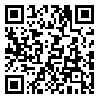Objective: Counter force brace is one of the most usefull treatments for lateral opicondylitis (Tennis elbow) because it decreases grip pain and increases the power of grip, power of wrist extension and Wrist Range of Motility. The purpose of this quasi experimental (repeated measurements)study was to determine the effect of 3 counterforce brace sizes on the wrist R.O.M, grip and wrist extension strength and pain intensity in two groups of healthy subjects and patients with tennis elbow.
Materials & Methods: 18 normal subjects & 18 patients with tennis elbow were selected simple conveniently and were tested with no brace and 3 size of counterforce (1,2 and 3 inches). The R.O.M , strength and pain intensity were measured by jamar goniometry and Nicholas MMT dynamometry & VAS, respectively.
Results: 1) With all sizes there was a significant decrease of R.O.M on normal subjects but no significant difference in patients. 2) There was a significant decrease of grip strength with 1-inch brace in normal subjects but a significant increase of grip strength with 2 and 3-inch brace in patiens. 3) All sizes of brace caused significant decrease of extension strength in normal subjects but increase in patients. 4)All size caused significant decrease of pain intensity that was more considerable in the case of 2 and 3 inch size.
Conclusion: The results shows that the counterforce brace may be considered as an effective treatment for increasing strength and decreasing pain in patients with tennis elbow.
Received: 12/08/2007 | Accepted: 11/10/2015 | Published: 11/10/2015
| Rights and permissions | |
 |
This work is licensed under a Creative Commons Attribution-NonCommercial 4.0 International License. |


